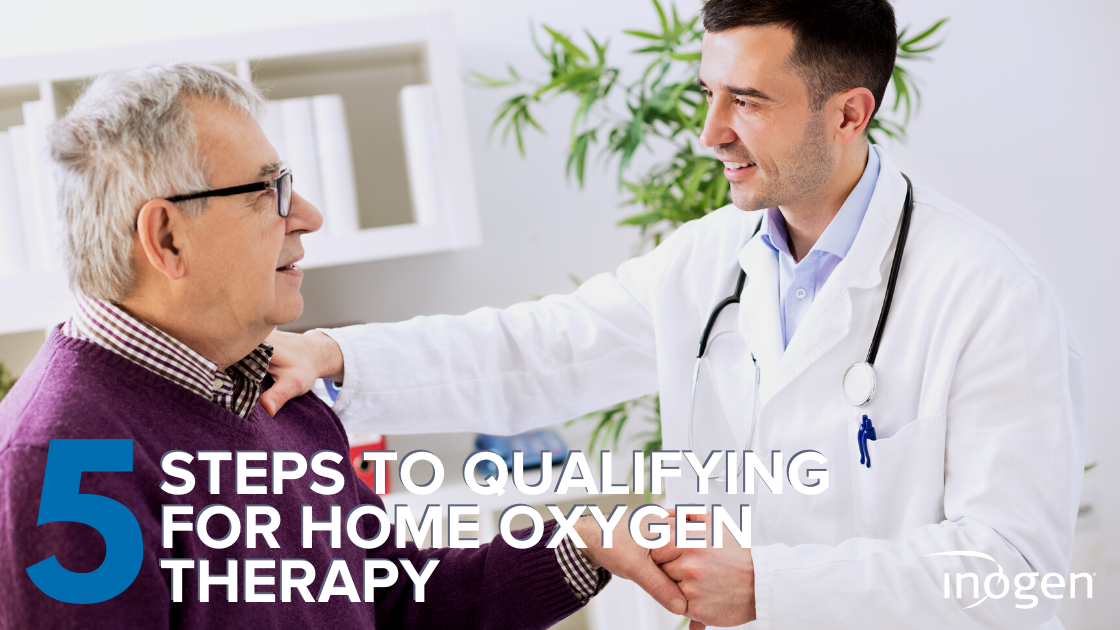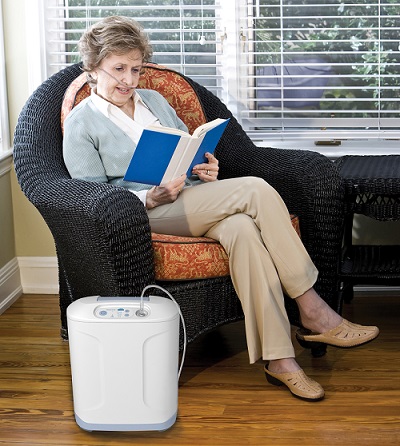If you think you have a health condition that would benefit from oxygen therapy and you are interested in getting oxygen at home, talk to your doctor about whether you meet the criteria for oxygen therapy. Ask about options for supplemental oxygen for home use, about home O2 requirements and anything else you need to know about getting oxygen at home.

If you are wondering, “Do you need a prescription for oxygen?” the answer is yes. There are several factors for both you and your doctor to consider before you can obtain a prescription for supplemental oxygen. Medicare, Medicaid and commercial insurance companies may pay for home oxygen. Medicare and other insurance providers have specific requirements for oxygen coverage and payment. Payment for your oxygen supplies is based on each company’s unique criteria for oxygen therapy, which may include diagnosis, laboratory results and other information as summarized below.
To qualify for home oxygen therapy, consider taking the following 5 steps:
If you want to enjoy peace of mind that comes from using oxygen on the go, you may want to consider a portable oxygen concentrator like one of the Inogen One models. Inogen products may be covered by insurance companies, including Medicare and Medicaid, to help with payments or rental of our oxygen products. With an Inogen One, Medicare may pay for portable oxygen rental if all of the following apply to you:
If the above conditions apply, you should meet the Medicare oxygen requirements and may be able to rent an Inogen One with Medicare.
With an Inogen One Medicare rental, you should qualify for oxygen at home with a monthly rental of oxygen supplies. Once approved, you will pay 20% of the Medicare approved amount, with the applicable Part B deductible. You will be able to rent your oxygen equipment for 36 months, after which time your supplier must continue to provide oxygen equipment and related supplies for an additional 24 months, and up to 5 years, as long as you have a medical need for oxygen. Even with innovative equipment like the Inogen One, Medicare offers rental coverage for getting oxygen at home.[2]
Once you qualify for home oxygen and receive your oxygen prescription, you might wonder, “So, how does home oxygen work?” After you receive your prescription, you should start looking for an oxygen provider that can help you get the oxygen delivery device you need. You should have a clear understanding of your oxygen prescription, the flow dosing and flow settings you will need. If you are not clear on your prescription, contact your doctor’s office so they can clarify the information for you before you look for your ideal oxygen delivery device. Consider what you need in an oxygen delivery device, including ease of use, size, weight, oxygen capacity (if you are considering an oxygen tank), battery duration (if you are considering a portable oxygen concentrator) and required service and maintenance. If you like the freedom to get out and about or travel frequently, you should consider the portable options available to you. If you are homebound, your needs may be different. Most importantly, your oxygen delivery device should work for your life. When you contact oxygen providers, make sure to ask about how their products work with your daily activities. Ask them, “How does home oxygen work with this oxygen device?” That way, you can envision life with that particular oxygen device before making a final decision. If you will be using insurance to pay for the cost of your oxygen therapy supplies, make sure you contact your insurance company before making a final choice as well, as they may have certain requirements you need to fulfill. Ask oxygen providers if they will help you navigate insurance or Medicare as well.[3]
If you need a caregiver’s help to navigate the home oxygen process for you, consider taking a number of different actions. First, bring your caregiver to your doctor’s appointments so that they can ask any questions they might have and get a thorough understanding of how to help you with your home oxygen therapy. If you want to give your doctor permission to communicate directly with your caregiver, or to give your caregiver the ability to make medical decisions for you, you should consider completing a document called a Durable Power of Attorney for Health Care, identifying your caregiver as a Health Care Agent for you. This person then has the ability to make medical decisions on your behalf, which can be especially important if your medical condition is debilitating and makes it difficult for you to think clearly. All of this should be carefully considered and discussed with your doctor, your lawyer and your caregiver before completing any paperwork. You can also contact your oxygen provider to find out what they might need if your caregiver will be navigating your home oxygen process for you. Make sure your caregiver has all the information they need, including your full prescription and the time at which your oxygen prescription expires. The majority of prescriptions expire after one year, when you will need to be reevaluated, but it is a good idea to find out for sure.[4]

An Inogen One Medicare rental can help you enjoy the benefits of an innovative portable oxygen concentrator at a reduced cost. The Inogen One can provide peace of mind while receiving your oxygen treatments. If you are concerned about how to get an oxygen tank in and out of your home or car, a portable oxygen concentrator is a great choice for you. Small, compact and lightweight, Inogen’s portable oxygen concentrators may be your solution for oxygen at home or away, all day, every day. If this sounds like the right choice for you, look into your Medicare oxygen requirements and find out if you can get an Inogen One Medicare rental today. Contact Inogen to find out more.
In order to qualify for home oxygen, you must first see your doctor to discuss the reasons you believe you need oxygen. If your doctor suspects that you would benefit from oxygen therapy, you will complete a number of tests, including an arterial blood gas study and pulse oximetry, to demonstrate that your blood oxygen levels indicate the need for oxygen therapy. If your measurements qualify you for home oxygen, you will receive a prescription from your doctor that will detail the dosing type and quantity of oxygen you will receive, along with the frequency and duration you will need to use home oxygen. Your prescription should also indicate what type of oxygen delivery device is best for you and your needs. If you are interested in a particular oxygen delivery device, like a portable oxygen concentrator, talk to your doctor about adding that to your prescription. [2]
Yes, you do. There are strict criteria for oxygen therapy. [1,2] Your doctor must provide proof that they recently examined you, along with a detailed diagnosis, explanation of why you require supplemental oxygen and a prescription for your oxygen use, which includes information regarding your flow rate, duration and frequency of use and duration of need.
Medicare’s requirements are the same, regardless of your oxygen delivery system. Every Medicare patient must meet the same home O2 requirements before receiving approval to rent oxygen equipment.[1] Medicare does cover an Inogen One Medicare rental if you meet the criteria. Contact Inogen for more information.
Costs can vary significantly depending on what kind of oxygen concentrator you want to rent, what kind of insurance coverage you have and whether or not you meet the criteria to have
your rental covered by insurance. Generally speaking, the prices of new home oxygen concentrators depend on batteries and other accessories, and range from USD 595 to
USD 2000. Used oxygen concentrators are cheaper (USD 595-1500), depending on the hours, warranty, and condition of the unit. However, the rental of a stationary oxygen concentrator
can run from USD 35 per day to over USD 200 per week [5] depending on your individual insurance coverage.
By Deborah Leader RN, BSN, PHN